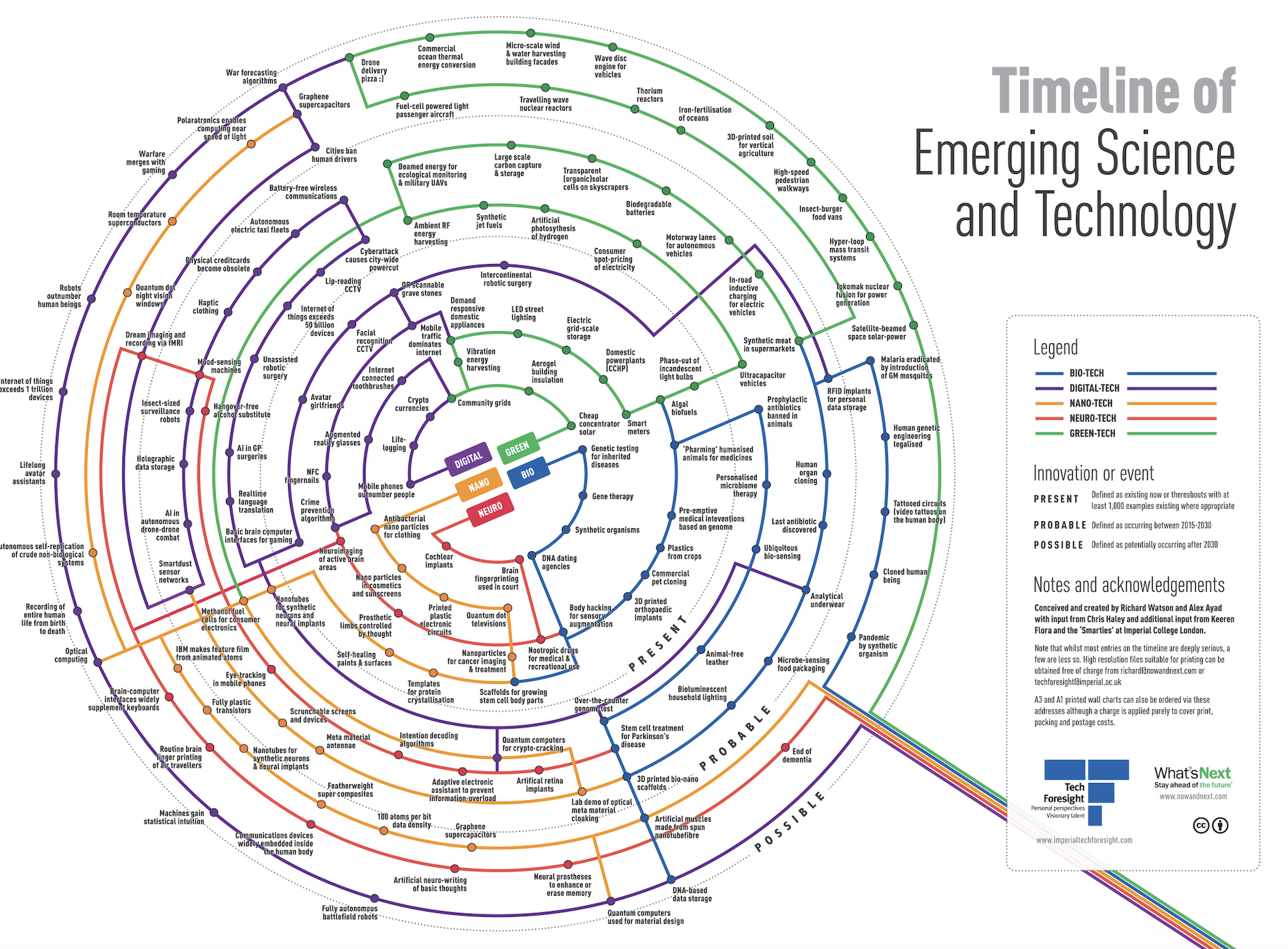Visions
Emerging timeline of science and technologyExplore the future of five science fields, looking ahead to the next few decades and explore what technologies, trends and big ideas lie downstream of breakthrough lab discoveries today. These five fields: biotech; nanotech; neurotech; digitech and greentech.
Please fill in your details below to reveal the download

Please email us at [email protected] for an accessible version of this infographic.
What it is?
We considered the future by first looking at weak signals from the present (defined as existing now or thereabouts with at least 1,000 occurrences existing where appropriate), and extrapolated from these to examine the probable future (defined as occurring between 2015-20130) and possible future (defined as potentially occurring thereafter 2030).
Today we already live in a world where computer algorithms are able predict crime ahead of the event, but by 2035 we foresee that dream-reading and recording (via functional MRI) as tech that will probably appear commonplace through the convergence of digitaltech and neurotech.
Where did the predictions come from?
The predictions you can see on this map we crowdsourced Imperial College academics, PhD and Postgraduate students and delegates from industry who had joined us at various Tech Foresight events. While most entries are deadly serious, a few are less so.
Tech Foresight is a focal point at Imperial College for people interested in the science and art of predicting ‘what comes next’. We support academics to make inspiring visions of the future, and share these visions with our corporate partners in ways that broaden and deepen relations, stimulate discussion, collaboration and the imagination.
The timeline is published under a Creative Commons license. You can use it commercially or make versions of it without asking, although we would be grateful if anyone using it links back to our original version.
Timeline of Emerging Science and Technology was conceived and created by Richard Watson (Now and Next) and Alex Ayad (Imperial College) – with thanks to Chris Haley (now at Nesta) in later stages, as well as to Keeren Flora and Lawrence Whitely (Wond Ltd) for design execution, and the ‘Smarties’ for crowdsourced research.